Have you ever wondered, why do dogs have wet noses? This intriguing question has fascinated dog owners and animal lovers alike for ages! A dog’s nose isn’t just wet for no reason; there’s a fascinating truth behind this common canine characteristic. Wet noses can indicate a healthy pup, but what else do they reveal about your furry friend? From dog health to the science of canine senses, the wetness of a dog’s nose plays a crucial role in how they interact with the world. Did you know that a wet nose helps dogs to better detect scents? This is because moisture enhances their sense of smell, which is significantly more powerful than ours. Moreover, many people ask, do wet noses mean my dog is sick? Understanding the significance of a dog’s nose can deepen your bond with your pet and improve their overall well-being. So, if you’re curious about the reasons behind this unique trait, or simply want to know “how do dog noses work?”, keep reading to uncover the answers! Discover the amazing world of our four-legged friends and learn more about why their noses are one of nature’s most fascinating features!
The Science Behind Wet Noses: Why Your Dog’s Nose is Always Damp
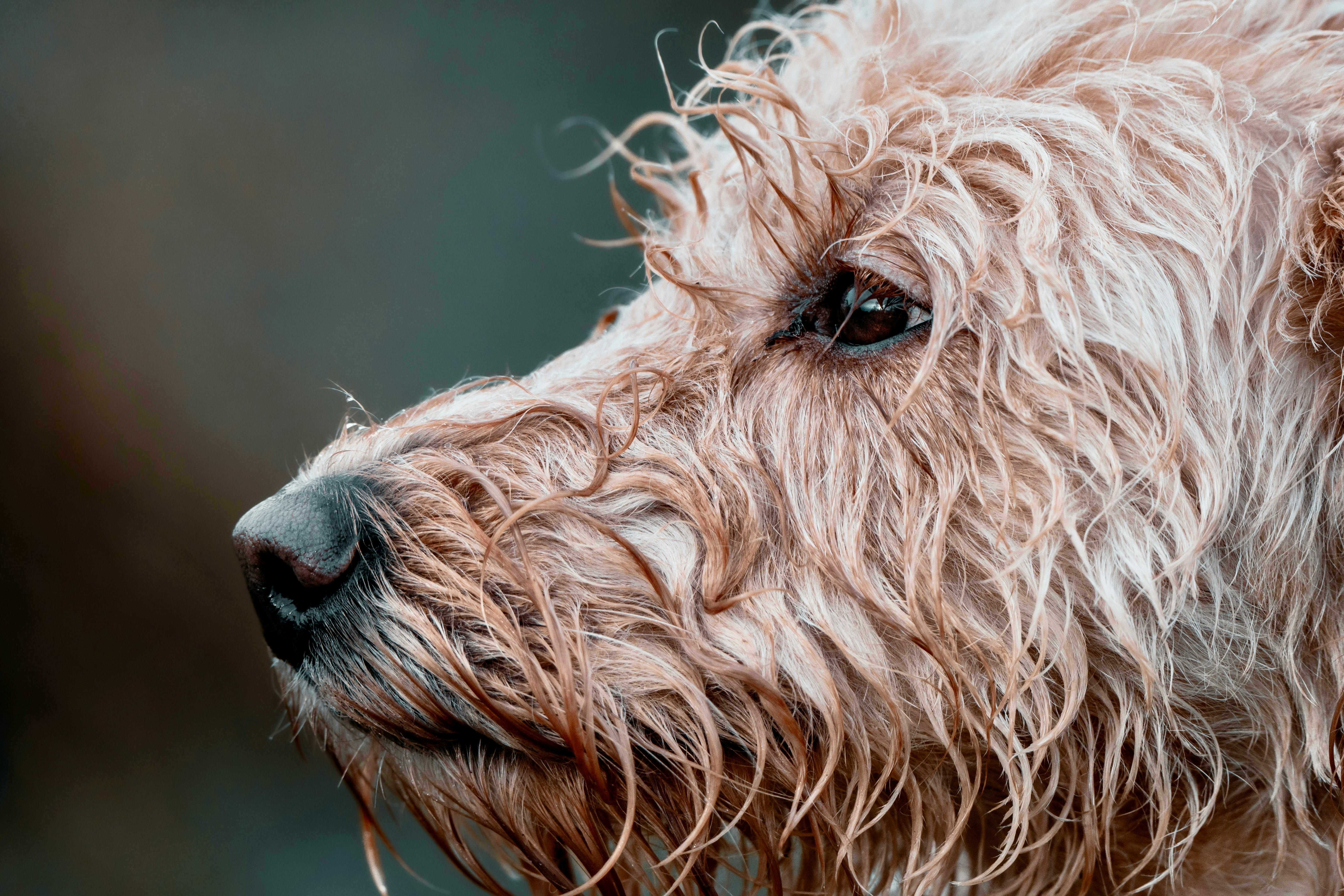
Have you ever wonder why your dog’s nose is always damp? It’s one of those quirky characteristics that make our furry friends so lovable. But there’s actually a fascinating science behind those wet noses. If you’re like many dog owners, you might have noticed how your pup’s snout feels cool and moist, even when they’re not coming in from the rain. So, let’s dive into the reasons behind this intriguing feature.
The Anatomy of a Dog’s Nose
A dog’s nose is not just an ordinary organ; it’s highly specialized. The surface of a dog’s nose is covered in a unique layer of skin that helps it to absorb moisture. This is called the rhinarium, and it contains numerous glands that secrete fluids. Here’s some important points regarding the anatomy:
- Moisture Absorption: Dogs’ noses can absorb moisture from their environment, which helps them to maintain a cool body temperature.
- Scent Detection: The wet surface helps to trap scent particles, making it easier for dogs to detect various smells. This is crucial for their hunting and survival instincts.
- Temperature Regulation: The moisture on their noses aids in thermoregulation, helping to cool down their bodies.
Why Do Dogs Have Wet Noses?
So, why do dogs have wet noses anyway? There’s a few key reasons that explain this phenomenon:
- Scent Enhancement: As mention earlier, wet noses enhance a dog’s ability to smell. The moisture helps to dissolve scent particles which makes it easier for dogs to pick up scents in the air.
- Health Indicator: A wet nose is often seen as a sign of a healthy dog. It can be an indicator of hydration levels and can signal if something is wrong. For instance, a dry nose could mean your dog is sick or dehydrated.
- Behavioral Signals: Dogs use their noses to communicate with other dogs and even people. A wet nose often indicates curiosity or excitement, as dogs sniff around their environment.
Historical Context of Dog Noses
Throughout history, dogs have been companions to humans, serving various roles from hunting to herding. The evolution of their noses is tied closely to their roles:
- Hunting: Dogs with a keen sense of smell were more likely to be successful in hunting, which leads to them being bred for this trait.
- Companionship: As dogs became domesticated, their ability to smell and sense their owner’s emotions became important for companionship and bonding.
Fun Facts About Dog Noses
Here’s some interesting tidbits about dog noses that you might not know:
- Unique Nose Prints: Just like human fingerprints, each dog has a unique nose print. It can actually be used to identify individual dogs if necessary.
- Nose Color: The color of a dog’s nose can vary based on breed, genetics, and even their age. Some dogs can have spots or different shades on their noses.
- Nose Temperature: A dog’s nose is typically cooler than the rest of their body. This is not only due to moisture but also due to blood flow to the area.
The Importance of Dog Nose Care
It’s crucial to keep your dog’s nose healthy. Here’s how you can help maintain it:
- Hydration: Ensure your dog has access to fresh water to keep them hydrated and their nose moist.
- Avoid Irritants: Keep your dog away from harsh chemicals or irritants that could dry out their nose.
- Regular Vet Check-ups: Regular vet visits can help catch any potential issues with your dog’s health, including their nose.
Comparison Table of Dog Nose Characteristics
Here’s a simple comparison table that outlines the various features of dog noses:
| Characteristic | Description |
|---|---|
| Moisture Level | Helps in scent detection and temperature regulation |
| Health Indicator | Wet often indicates good health; dry may signal issues |
| Unique Print | Each dog has a unique nose print, like fingerprints |
| Scent Detection | Highly sensitive to smells, aids in hunting and companionship |
Dogs are truly amazing creatures, and their wet noses are just one of the many characteristics that make them special. Understanding the science behind their noses not only helps us care for them better but also deepens the bond we share with our furry companions. Next time you give your dog a pat and feel that cool, damp nose, you’ll appreciate the fascinating truth behind it!
Wet Noses and Health: What Your Dog’s Nose Can Reveal About Their Well-being

Dogs are often called man’s best friend, and one of the most endearing features they have is their wet noses. But why do dogs have wet noses? This question often leads to a fascinating exploration of canine health. A wet nose is not only a cute characteristic, it can actually provide important clues about your dog’s health and well-being. Understanding what a dog’s nose might tell you can help you become a more attentive pet owner.
The Science Behind Wet Noses
Dogs’ noses are inherently moist, and this moistness serves several purposes. First, a wet nose can help dogs smell better. The moisture captures scent particles from the air, allowing dogs to detect scents that are far beyond the capability of human noses. This is because dogs have a highly developed sense of smell, which is about 10,000 to 100,000 times more sensitive than ours.
- The wetness of a dog’s nose comes from mucous glands and the dog’s saliva.
- Dogs may lick their noses to keep them moist, enhancing their olfactory abilities.
- A cool and damp nose often indicates a healthy dog.
Health Indicators: What a Dog’s Nose Can Reveal
A dog’s nose can reveal a lot about its overall health. While it’s not a foolproof method for diagnosing health issues, changes in the nose’s appearance or moisture level can signal underlying problems. Here are some things to look for:
- Temperature: A dry or hot nose can sometimes indicate fever or illness.
- Color: A healthy dog’s nose is typically dark and moist. If it becomes pale or discolored, it might be a sign of health issues.
- Crustiness: A crusty or scabby nose can indicate allergies, infections, or skin conditions.
- Excessive Moisture: While a wet nose is generally a good sign, excessive moisture could point towards a potential health issue.
Common Misconceptions about Dog Noses
Many people believe that a dry nose means a dog is sick, which is not always true. Dogs can have dry noses for a variety of reasons, including weather conditions or simply waking up from sleep. Here are a few common myths:
- Myth 1: A dry nose always means illness.
- Myth 2: Dogs’ noses should always be wet and cold.
- Myth 3: You can determine a dog’s health solely by its nose.
Historical Context of Dogs and Their Noses
The wet nose of a dog has fascinated humans for centuries. Historically, dogs were bred for specific tasks, and their noses played a crucial role in their abilities. For instance:
- Hunting Dogs: Bred for tracking scents, their wet noses helped them in detecting prey.
- Rescue Dogs: Wet noses enhanced their ability to find missing persons by detecting scents in various terrains.
- Service Dogs: Many service dogs rely on their noses for tasks, such as detecting medical conditions in their owners.
Practical Tips for Dog Owners
As a responsible dog owner, it’s essential to monitor your dog’s nose and overall health. Here are some practical tips you can consider:
- Regular Check-Ups: Schedule regular vet visits to keep your dog’s health in check.
- Observe Changes: Take note of any changes in your dog’s nose, behavior, or appetite.
- Hydration: Make sure your dog stays hydrated, as this can affect the moisture of their nose.
- Clean Environment: Keep your dog’s living space clean to reduce the chance of infections or allergies.
When to Seek Veterinary Help
While many factors can affect a dog’s nose, certain signs should prompt you to seek professional help. If your dog shows any of the following symptoms, it’s best to contact a veterinarian:
- Persistent dryness or crustiness that does not improve.
- Unusual color changes, particularly if accompanied by other symptoms.
- Excessive discharge or bleeding from the nose.
- Lethargy or significant changes in behavior or appetite.
In summary, the wet nose of your dog can tell more than just a cute story. It can be an indicator of their health and well-being. By paying attention to the nuances of your dog’s nose, you can better understand their needs and take proactive steps to maintain their health. So next time you see that wet nose, remember, it’s more than just charming; it’s a window into your furry friend’s overall condition!
Curious Canines: 7 Surprising Facts About Why Dogs Have Wet Noses
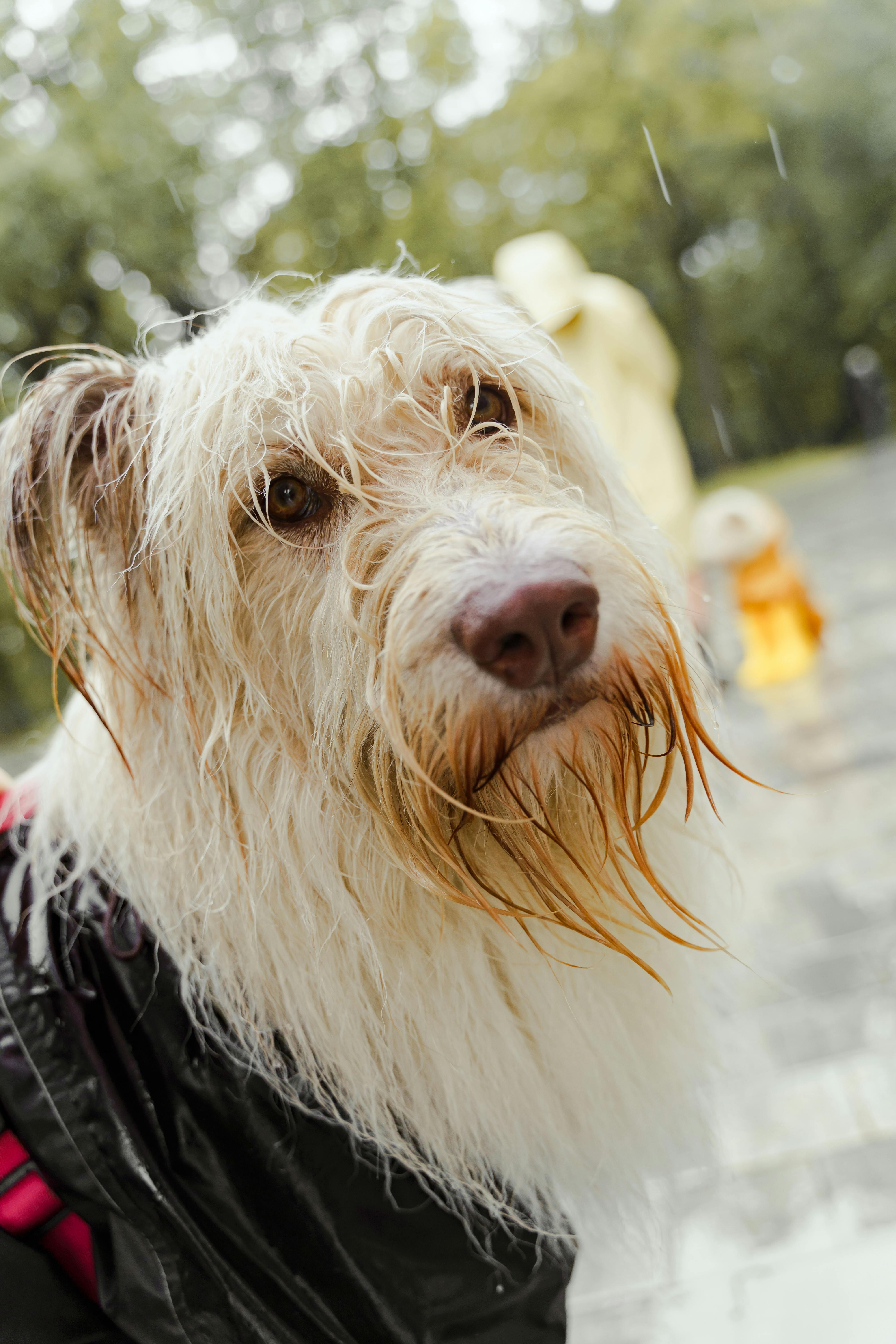
Dogs are one of the most beloved pets around the world, and their wet noses are often a topic of interest for many. You might’ve asked yourself at some point, why do dogs have wet noses? Well, it turns out there’s more to this curious canine feature than just a quirk of nature. Let’s dive into seven surprising facts that uncover the fascinating truth about why dogs have wet noses.
1. Nature’s Thermometer
One of the most interesting reasons why dogs have wet noses it’s because it helps them regulate their body temperature. A dog’s nose is a natural thermometer! When a dog is feeling hot, the moisture on their nose evaporates, cooling them down. This kind of cooling system it’s vital since dogs don’t sweat like humans do. Instead, they rely on panting and their wet noses to stay comfortable.
2. Enhanced Sense of Smell
Did you know that a dog’s sense of smell is thousands of times more sensitive than that of a human? The wetness of their nose plays a crucial role in this. The moisture on the nose helps to capture scent particles from the air, which then gets transferred to a special organ called the Jacobsen’s organ located in the roof of their mouth. This process enhances their ability to detect various scents and pheromones.
3. The Importance of Hydration
Another surprising fact is that a dog’s wet nose it’s a sign of hydration. A healthy dog usually has a moist nose, which indicates that they are well-hydrated. If your dog’s nose becomes dry or cracked, it might be a signal for you to check their water intake or look for signs of illness. Keeping your pet hydrated it’s essential for their overall health and well-being.
4. Communication Tool
Dogs are social creatures, and their noses are vital for communication. Dogs often use their sense of smell to interpret the world around them, and the wetness of their noses can also communicate their emotional state. For instance, a wet nose can indicate that a dog is feeling friendly and relaxed, while a dry nose might signal stress or discomfort. Understanding these cues can help pet owners respond better to their furry friends.
5. Temperature Regulation
Besides cooling down, the wetness of a dog’s nose helps them in regulating their body temperature in other ways too. When they are in a hot environment, their nose can also absorb heat. This means, when they are hot, the moisture helps to cool the blood flow to their brain, ensuring that they don’t overheat. It’s a fascinating adaptation that shows just how well dogs have evolved to manage their physical needs.
6. The Role of Breed Differences
Not every dog has the same type of wet nose. Some breeds naturally have drier noses due to their genetics. For example, brachycephalic breeds like Bulldogs or Pugs may have different moisture levels in their noses compared to breeds like Retrievers or Shepherds. So, if you’re wondering why your dog’s nose feels different than another dog’s, it could just be due to their breed.
7. A Sign of Health
Lastly, a wet nose can often indicate a dog’s overall health. Veterinarians frequently check a dog’s nose as part of a physical examination. A healthy, moist nose, usually suggests that the dog is in good health. Conversely, if a dog has a consistently dry or excessively wet nose, it may warrant a trip to the vet. Monitoring changes in your dog’s nose, along with other health indicators, can help catch issues early.
Quick Reference Table: Dog Nose Facts
| Fact | Explanation |
|---|---|
| Thermoregulation | Helps cool down the dog through evaporation. |
| Enhanced Smell | Moisture captures scent particles for better detection. |
| Hydration Indicator | A moist nose usually means the dog is hydrated. |
| Communication Tool | Wetness can indicate emotional states and social cues. |
| Temperature Regulation | Helps absorb heat and regulate body temperature. |
| Breed Differences | Different breeds may have varied moisture levels in their noses. |
| Health Indicator | A wet nose can be a sign of good health. |
In summary, the wet nose of your canine companion is not just an adorable trait; it’s a complex feature that serves many purposes. From helping with temperature regulation to being a key player in their sense of smell, the wetness of a dog’s nose is both fascinating and functional. Whether you’re a dog owner or just an animal lover, understanding these facts can enhance your appreciation for our furry friends and their unique biology. So next time you see a dog with that charming wet nose, remember the incredible science behind it!
The Benefits of a Wet Nose: How It Enhances Your Dog’s Sense of Smell
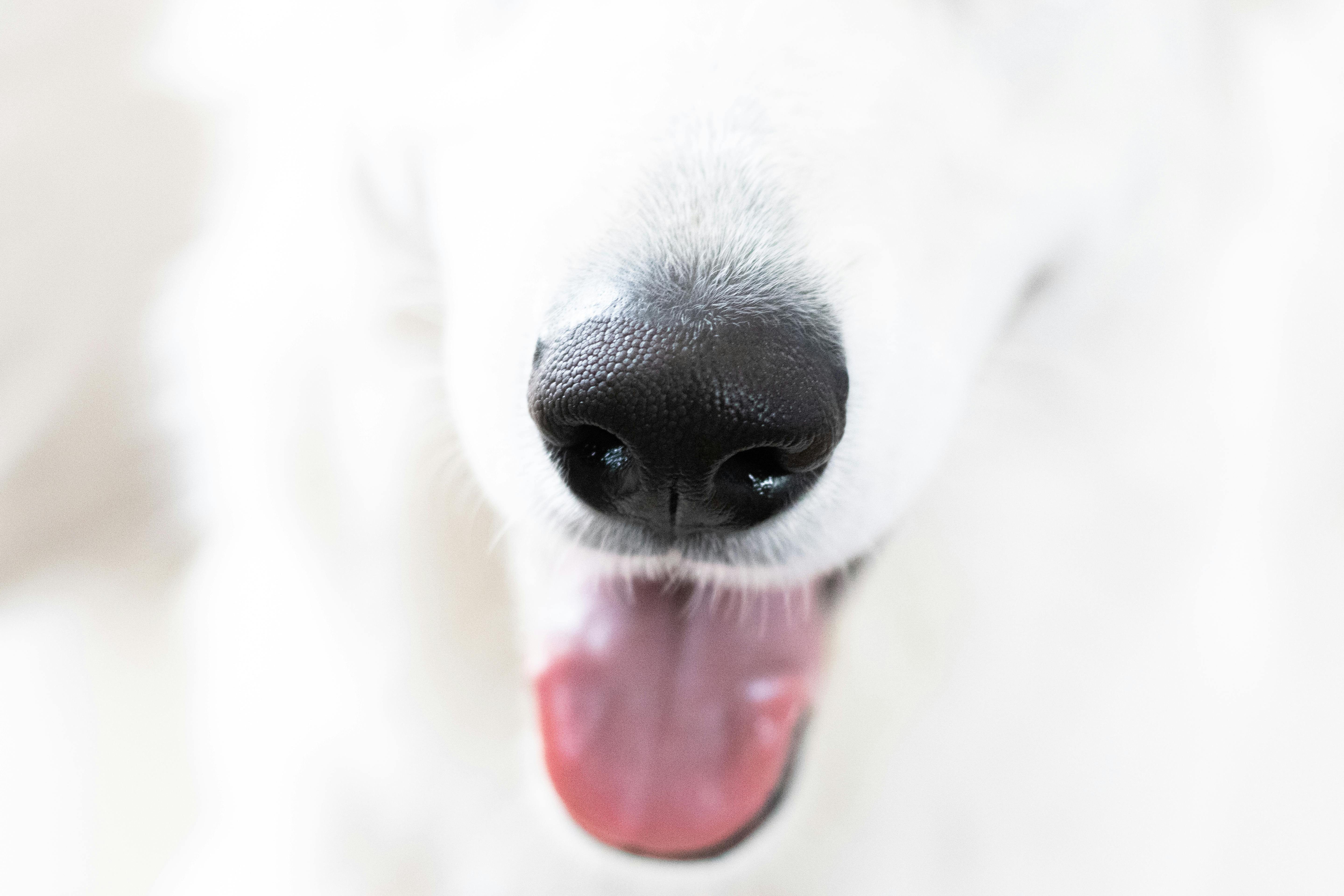
Dogs are known for their loyalty, companionship, and, of course, their wet noses. You might have wondered why do dogs have wet noses? It’s more than just an adorable trait; it actually plays a crucial role in enhancing their sense of smell, which is already impressive compared to humans. Let’s dive into the fascinating truth behind those wet noses and how it benefits your furry friends.
The Science Behind Wet Noses
First off, a dog’s nose is often wet due to the secretion of mucus. This moisture helps to capture scent particles, making it easier for dogs to detect different smells. In fact, dogs have about 220 million olfactory receptors in their noses, compared to a mere 5 million in humans. So, when you consider the sheer number of scent receptors, it’s clear that their noses are not just for show.
- Dogs can identify scents at incredibly low concentrations.
- Their sense of smell is up to 100,000 times better than ours.
- Wet noses help in cooling down the body in hot weather.
How Wet Noses Enhance a Dog’s Sense of Smell
Moisture plays an essential role in the dog’s olfactory system. When a dog inhales, tiny scent particles dissolve in the mucus on their noses, allowing the olfactory receptors to detect them. This process is one of the reasons why dogs can sniff out drugs, bombs, or even track missing persons. Their noses are like nature’s super-scent detectors!
Here’s a quick look at how the wetness of a dog’s nose impacts their smelling ability:
- Captures Scent Particles: The moisture aids in trapping different scents.
- Increases Sensitivity: A wet nose can increase sensitivity to odor, making it easier to differentiate between smells.
- Helps in Temperature Regulation: Wet noses also help cool down dogs, which can enhance their overall hunting abilities.
Why Do Dogs Have Wet Noses?
Beyond enhancing smell, there are a few reasons that contribute to why dogs have wet noses:
- Thermoregulation: A dog’s nose is a part of their cooling system. When a dog is overheated, they may lick their noses to keep them wet, facilitating cooling.
- Health Indicator: A wet nose is often seen as a sign of a healthy dog. If a dog’s nose is excessively dry, it could indicate dehydration or illness.
- Scent Communication: Dogs use their noses to communicate with other dogs. A wet nose can transmit more scent signals when they greet one another.
Historical Context of Dog Noses
Dogs have been domesticated for thousands of years, with their sense of smell being honed through selective breeding. Historically, dogs were bred for specific tasks like hunting, herding, and guarding. Each of these tasks required a keen sense of smell, which is why many breeds have developed strong olfactory abilities.
- Hounds: Bred for hunting, they have an exceptional sense of smell.
- Terriers: Often used for burrowing, they have noses that can detect scents underground.
- Retrievers: Typically used for fetching, they rely heavily on their noses to locate downed game.
Fun Facts About Dog Noses
- Unique Patterns: Just like human fingerprints, every dog has a unique nose print.
- Color Changes: A dog’s nose can change color with the seasons, often darkening in the summer and lightening in winter.
- Nose Work: There are dog sports, like nose work, that focus on dogs’ extraordinary smelling capabilities.
The Importance of Nose Care
While wet noses are generally a good sign, it’s also essential to be mindful of your dog’s nose health. Keep an eye out for any changes, like excessive dryness or cracking, as this can signal health issues. Here’s how you can care for your dog’s nose:
- Regular Check-ups: Make sure to have your vet check your dog’s nose during routine visits.
- Hydration: Always ensure your dog is well-hydrated, especially in hot weather.
- Moisturizing: If your dog has a dry nose, consider using a vet-approved moisturizer.
In summary, understanding the benefits of a wet nose helps to appreciate the incredible ways dogs interact with the world. Their ability to smell is not just a fascinating fact; it’s a crucial aspect of their lives. Wet noses are a signature of health, efficiency, and the incredible bond they share with humans and the environment. So, the next time you give your dog a pat on the head, take a moment to admire that wet nose and recognize the wonders it brings to your furry friend’s life.
Is Your Dog’s Nose Too Wet? Understanding Normal vs. Abnormal Conditions

Is your dog’s nose too wet? Many dog owners often wonder about this. Is it a sign of health or something more serious? In this article, we will explore why dogs have wet noses, what constitutes normal versus abnormal conditions, and the fascinating truth behind this common canine trait.
Why Do Dogs Have Wet Noses?
Dogs have wet noses for various reasons. First off, a wet nose helps them smell better. Yep, that’s right! A dog’s sense of smell is way better than ours. According to research, dogs have up to 300 million scent receptors, compared to a human’s 5 million. When their nose is moist, it helps to capture scent particles in the air, enhancing their ability to sniff out things.
Here’s a quick list of reasons why dogs’ noses tend to be wet:
- Temperature Regulation: Dogs can’t sweat like humans. Their primary way of cooling down is through their noses and panting.
- Scent Enhancement: Moisture allows scent particles to stick, making it easier for dogs to detect odors.
- Health Indicator: A wet nose can signal good health, but there are exceptions.
Normal vs. Abnormal Nose Conditions
So, is your dog’s nose too wet? It’s important to understand what normal looks like. A healthy dog’s nose is typically moist, but it can vary throughout the day. Here some signs to look for:
Normal Conditions
- Temperature: Slightly warm and moist
- Appearance: Smooth with no cracks or sores
- Behavior: Alert and active
Abnormal Conditions
- Dry Nose: Could indicate dehydration or illness.
- Cracking or Scaling: Might be a sign of a skin condition.
- Discharge: Any abnormal discharge (green or yellow) can signal infection.
Signs of Concern
If your dog’s nose starts changing suddenly, it might be worth checking with a vet. Below are some symptoms to keep an eye on:
- Persistent Dryness: Especially if it’s combined with lethargy.
- Unusual Discharge: Any colored discharge needs attention.
- Loss of Appetite: If your dog is not eating normally, it could be related.
Fun Facts About Dog Noses
Did you know that a dog’s nose print is as unique as a human fingerprint? Each dog has a distinct pattern of ridges and creases. Here’s some more interesting info:
- Nose Color: A dog’s nose can be black, brown, pink, or even spotted.
- Nasal Heat Sensors: Some breeds have heat sensors in their noses, helping them detect body heat from prey.
- Nose as a Communication Tool: Dogs also use their noses to communicate with each other through scent marking.
How to Care for Your Dog’s Nose
Taking care of your dog’s nose is pretty easy. Here are some tips:
- Hydration: Make sure your dog drinks enough water.
- Avoid Irritants: Keep them away from strong chemicals or smoke.
- Check Regularly: Look for any signs of dryness or cracking.
When to See a Vet
If you notice any abnormal signs, it might be time to visit your veterinarian. Here’s what they might do:
- Physical Exam: Check for other symptoms.
- Blood Tests: To rule out underlying conditions.
- Skin Scraping: If there are sores, to check for infections.
It can be concerning when a dog’s health seems off. But remember, a wet nose is usually a good sign. Dogs tend to lick their noses. This behavior can be due to curiosity or just keeping it clean. It’s an instinctive action.
So, while a wet nose is generally a sign of a healthy dog, it’s essential to pay attention to any changes. If you’re ever in doubt about your dog’s health, consulting a veterinarian is always the best choice. Knowing the signs of normal vs. abnormal conditions can help you ensure your furry friend stays happy and healthy.
The Role of Temperature: How Weather Affects Your Dog’s Nose Moisture
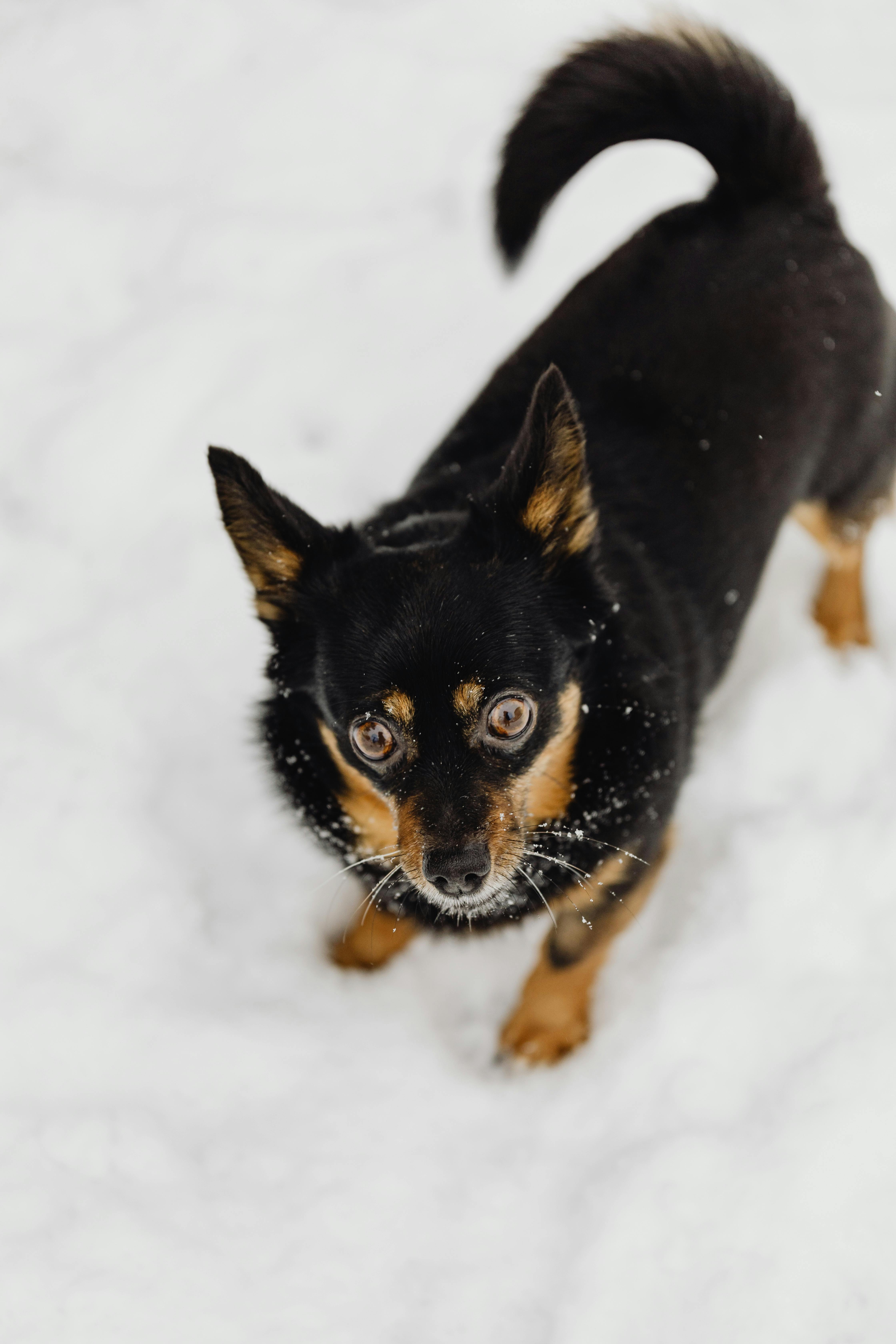
Have you ever wonder why your dog noses are often wet? The truth is, many factors influence this phenomenon, and temperature plays a significant role in it. Dogs, like humans, are affected by their environment. This article explores the fascinating connection between weather, temperature, and the moisture of your furry friend’s nose.
The Science Behind Dog Noses
Dog noses are not just adorable; they serve crucial functions. A wet nose helps dogs to sense their world better. Their sense of smell is already incredibly sharp, but having a moist surface increases their ability to absorb scent molecules. When it’s hot outside, the moisture on a dog’s nose can evaporate faster, potentially leading to a drier nose. Conversely, when it’s cold and humid, noses tend to stay wetter.
The Role of Temperature
Temperature affects your dog’s nose moisture in several ways:
Humidity Levels: In humid weather, noses tend to remain wetter. This is because the air is saturated with moisture, which can help maintain the dampness of the nose.
Hot Weather: In hotter environments, dogs might pant or seek shade, which can lead to a drier nose. Dogs also sweat through their paws, but mainly they rely on their noses for cooling, so a dry nose might signal overheating.
Cold Weather: Cold temperatures can cause noses to get dry and cracked. Dogs may spend more time indoors in winter, which can also affect moisture levels as indoor air often lacks humidity.
Why Do Dogs Have Wet Noses?
There are several reasons why dogs have wet noses, and they all tie back to their biology and behavior:
Enhanced Smell: As mentioned, moisture increases scent absorption, making it easier for dogs to detect odors. This is crucial for hunting and tracking.
Temperature Regulation: A wet nose helps dogs to cool down. When a dog pants or breathes, the moisture evaporates, helping to lower their body temperature.
Health Indicator: A normal, healthy dog nose is typically wet. If it’s dry or cracked, it could be a sign of dehydration or illness.
Communication: Dogs use their noses as a communication tool. A wet nose can indicate that a dog is relaxed and happy.
Comparing Wet and Dry Noses
It’s helpful to understand the differences between wet and dry noses in dogs. Here’s a quick comparison:
Wet Nose:
- Generally indicates a healthy dog.
- Better for smelling.
- Indicates a dog is cool and relaxed.
Dry Nose:
- Could signal dehydration or illness.
- May mean the dog is overheated.
- Can be a sign of stress or discomfort.
Factors Influencing Nose Moisture
Several factors can influence the moisture of your dog’s nose aside from temperature:
- Diet: A diet low in water content can lead to dry noses. Dogs need to stay hydrated, so be mindful of their water intake.
- Activity Level: Active dogs tend to have wetter noses. Exercise increases circulation, which can enhance moisture levels.
- Age: Older dogs might have drier noses due to natural aging processes.
Maintaining Nose Moisture
Here are some practical tips to help keep your dog’s nose moist and healthy:
Hydration: Always provide your dog with fresh, clean water. Keeping them hydrated is key.
Humidity: In dry climates, consider using a humidifier in your home, especially during the winter months when indoor air can become dry.
Regular Vet Check-ups: Regular check-ups can help you monitor your dog’s overall health and catch any potential issues early.
Balanced Diet: Feed your dog a balanced diet that includes moisture-rich foods, especially if they’re prone to dry noses.
Understanding the role of temperature and other factors affecting your dog’s nose moisture is essential for their health and wellbeing. A wet nose is not just a cute feature; it’s a sign of a happy and healthy dog. By keeping an eye on these factors, you can help ensure your furry friend stays in top shape, regardless of the weather. So, next time you pet your dog, pay attention to that nose – it tells you a lot more than you might think!
Wet Noses and Bonding: How Your Dog’s Nose Connects to Their Emotions
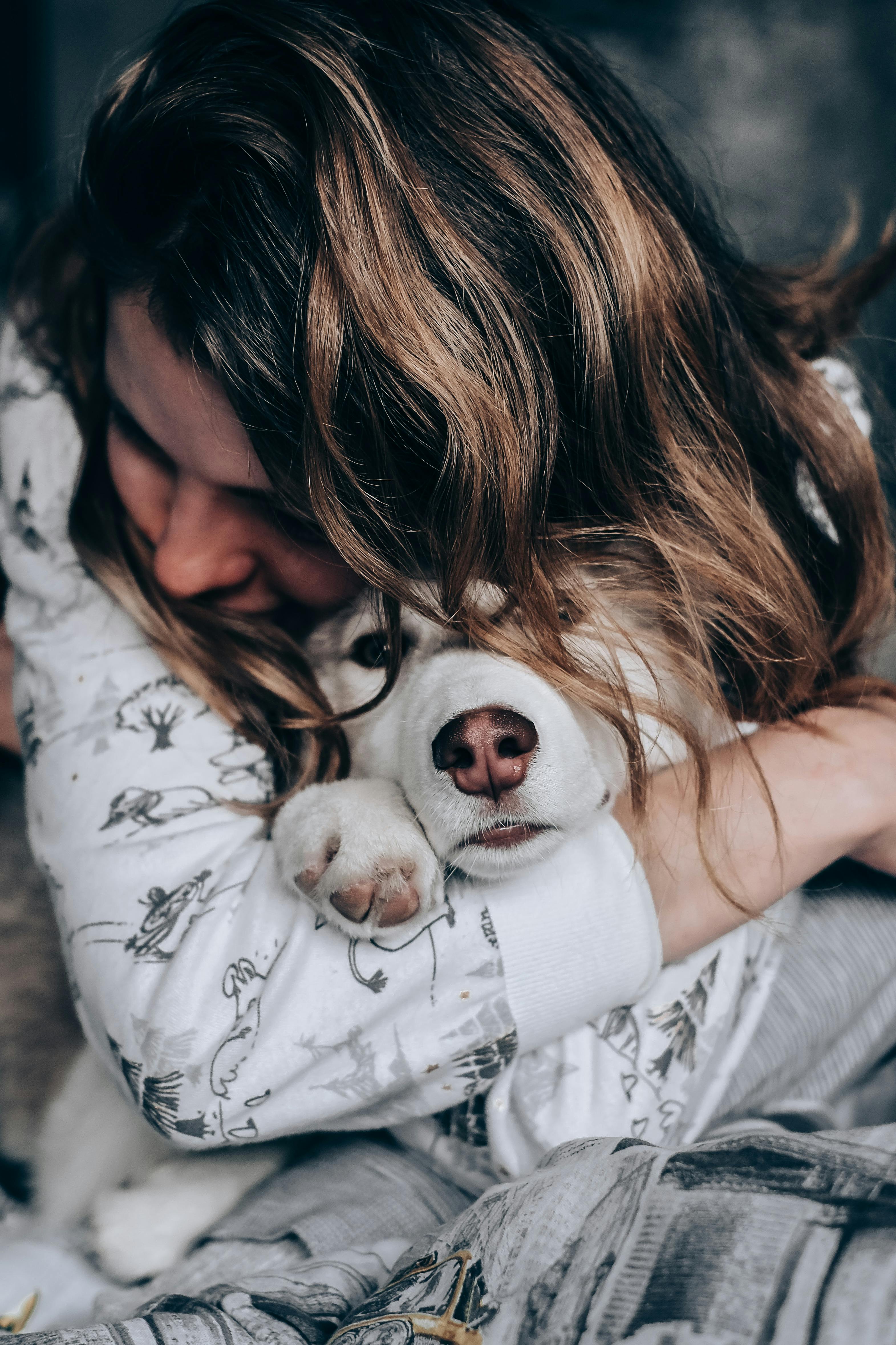
Have you ever wondered why dogs have wet noses? It’s a common question among dog owners and animal lovers alike. Wet noses are such a unique feature of our furry friends, and they actually play a significant role in how dogs connect with us and their surroundings. Let’s explore the fascinating truth about wet noses and how they relate to dogs’ emotions and bonding.
The Science Behind Wet Noses
Dogs’ noses are always moist for a reason. This wetness helps to enhance their sense of smell, which is already way better than ours. The moisture in a dog’s nose helps to trap scent particles, making it easier for them to smell things. But it’s not just about sniffing around; a wet nose is also a sign of health and vitality.
- Scent Enhancement: The moisture captures scent particles.
- Temperature Regulation: Dogs can cool down through their noses.
- Health Indicator: A healthy dog usually has a moist nose.
Why Are Dog Noses Wet?
So, why do dogs have wet noses? There are a couple of main reasons that explain this phenomenon. First off, dogs have a special gland in their noses that produces mucus. This mucus is what keeps their noses moist and is essential for their scenting abilities.
Secondly, when dogs lick their noses, they’re not just being cute; they’re actually keeping their noses hydrated. This behavior can be seen when they’re excited or focused. It’s like they’re preparing themselves to sniff out something interesting or engaging.
Emotional Connection: A Dog’s Nose and Bonding
Wet noses are also a crucial part of how dogs bond with their humans. When a dog nudges you with their wet nose, it’s often a sign of affection or a way of seeking attention. Dogs use their sense of smell to communicate emotions and to understand their environment. Here’s how their noses play a role in bonding:
- Scent Recognition: Dogs can recognize their owners by scent, creating a strong emotional bond.
- Emotional Signals: A wet nose can indicate a dog is relaxed or happy.
- Social Interaction: Dogs often greet each other through scent, which helps build connections.
Fun Facts About Dog Noses
- Dog noses can have different colors and patterns, and this can vary by breed.
- The average dog has around 300 million scent receptors, compared to humans, who only have about 5 million.
- Dogs’ noses can also change temperature; a cooler nose might indicate a dog is feeling unwell.
Health Considerations: What a Wet Nose Means
While a wet nose is typically a sign of a healthy dog, it’s important to know that not all wet noses are created equal. Sometimes, a very dry nose can indicate health issues, like dehydration or illness. Here’s a quick guide on how to assess your dog’s nose:
- Normal: Slightly moist, cool to the touch.
- Dry: Could mean dehydration, fasting, or illness.
- Excessively Wet: Might indicate allergies or a respiratory issue.
The Cultural Significance of Dog Noses
Throughout history, dogs have been cherished companions, and their noses have been a part of that relationship. In many cultures, a dog’s wet nose is seen as a good omen. For example, some ancient civilizations believed that a wet nose could ward off evil spirits. Today, dogs are still celebrated for their ability to connect with humans on an emotional level, and their noses play a crucial role in that connection.
Tips for Keeping Your Dog’s Nose Healthy
- Hydration: Ensure your dog has access to fresh water at all times.
- Regular Checks: Observe your dog’s nose for any changes in moisture or color.
- Vet Visits: Regular check-ups can help catch any potential issues early.
Understanding why dogs have wet noses and how they connect to their emotions can deepen our bond with our furry companions. The next time your dog nudges you with their cool, moist nose, remember that they are communicating love and trust. By recognizing these signs, we can foster a strong emotional connection with our pets, enhancing our shared experiences. So, embrace those wet noses; they are more than just a cute feature—they’re a window into your dog’s heart!
Dogs and Their Senses: The Fascinating Link Between Wet Noses and Taste

Dogs are one of the most beloved pets around the world, and their unique characteristics make them fascinating creatures. One of the most interesting aspects about dogs is their noses. You probably wonder, why do dogs have wet noses? This question leads us into a world of sensory exploration, where the link between a dog’s wet nose and its taste capabilities reveals much about how dogs interact with their environment. Let’s dive into the fascinating truth about those adorable, moist noses!
What Makes a Dog’s Nose Wet?
A dog’s nose is naturally moist due to the secretion of mucus and oils. But there’s more to it than just a little dampness. The wetness plays a crucial role in enhancing their sense of smell, which is significantly more powerful than that of humans. Here’s why a wet nose is so important:
- Enhanced Smell: A wet nose helps trap scent particles in the air, making it easier for dogs to detect and identify different smells.
- Temperature Regulation: Dogs can cool down through their noses, as moisture evaporates, helping regulate their body temperature.
- Health Indicator: A wet nose can be a sign of a healthy dog, while a dry nose can indicate dehydration or illness.
Dogs’ Sense of Taste
Dogs have approximately 1,700 taste buds, compared to humans, who have about 9,000. But how does this relate to their wet noses? Well, the moisture on a dog’s nose aids in taste perception. When they lick something, the wetness allows them to sample the flavors more effectively. Here’s what you might find interesting:
- Dogs are particularly sensitive to sweet, sour, salty, and bitter tastes.
- They are less sensitive to taste than humans, but their sense of smell compensates for this.
- Some studies suggest dogs have a preference for certain flavors, like meat or fat, which can be linked back to their evolutionary history.
The Science Behind Dogs’ Noses
Have you ever wondered how a dog can smell things that are miles away? The science is pretty cool! A dog’s nose has a complex structure that enables them to detect even the faintest odors. Here are some facts about their olfactory system:
- The olfactory bulb in a dog’s brain is proportionally larger than that of humans, allowing for more smell processing.
- Dogs have up to 300 million olfactory receptors, while humans only have about 5 million.
- Dogs can differentiate between odors and remember them for a long time, making them exceptional at tracking scents.
Historical Context of Dogs and Their Noses
Dogs have been companions to humans for thousands of years. Historically, they were bred for specific tasks, including hunting and herding, which relied heavily on their incredible sense of smell. Here’s a brief timeline:
- Ancient Times: Dogs were used for hunting. Their ability to smell prey made them invaluable to early humans.
- Middle Ages: Breeding for specific traits became common, with some breeds being developed for tracking scents.
- Modern Era: Today, dogs are employed in various fields, including search and rescue, law enforcement, and even medical detection.
Fun Facts About Dogs’ Noses
Here are some fun and interesting facts about dog noses that you might not know:
- Each dog’s nose print is unique, similar to a human fingerprint.
- Dogs can smell diseases, including cancer and diabetes, due to their advanced olfactory abilities.
- Some breeds, like Bloodhounds, can follow a scent trail that is days old!
Dogs and Their Senses: A Comparison
To understand just how remarkable a dog’s sense of smell is, let’s compare it to humans:
| Feature | Dogs | Humans |
|---|---|---|
| Olfactory Receptors | 300 million | 5 million |
| Ability to Smell | 40 times better | N/A |
| Taste Buds | 1,700 | 9,000 |
Practical Examples of Dogs Using Their Noses
Dogs use their noses for various tasks in everyday life. Here are some practical examples:
- Search and Rescue: Dogs trained to find missing persons rely on their noses to track scents in challenging environments.
- Medical Detection: Certain dogs can detect diseases by smelling breath or skin samples, helping in early diagnosis.
- Detection Work: Police dogs use their noses to locate drugs, explosives, and even missing persons.
The wet noses of dogs are not just cute features; they serve essential functions that enhance their sensory experience. Understanding why dogs have wet noses and their incredible sense of taste can deepen our appreciation for these loyal companions. Next time you pet your dog, take a moment to think about the amazing capabilities packed into that little, moist nose. It’s more than just a cute feature; it’s a gateway to a world of scents and tastes
How to Care for Your Dog’s Nose: Tips for Maintaining Healthy Moisture Levels

Taking care of your dog’s nose is crucial for their overall health and well-being. You might wonder, why do dogs have wet noses in the first place? This fascinating aspect of dog biology has intrigued pet owners for ages. Wet noses not only feel cool to the touch but also serve important functions. Let’s explore how to maintain your dog’s nose moisture levels and dive into the science behind those adorable wet noses.
Why Do Dogs Have Wet Noses?
Dogs have wet noses for several reasons. Most notably, it helps with their sense of smell. The moisture on a dog’s nose helps to capture scent particles, making it easier for them to detect odors. Imagine how different life would be if you couldn’t smell anything! Here are some interesting facts about why dogs have wet noses:
- Enhanced Smelling Ability: A wet nose can pick up more scent particles than a dry one.
- Cooling System: Just like humans sweat, dogs can cool down through their noses by evaporating moisture.
- Health Indicator: A healthy dog typically has a moist nose, so changes can signal issues.
How to Care for Your Dog’s Nose
Keeping your dog’s nose healthy is important. Here are some practical tips to maintain the moisture levels and overall health of your furry friend’s nose:
- Hydration is Key: Always ensure your dog have access to fresh water. Dehydration can lead to a dry nose.
- Regular Check-ups: Visit the vet on a regular basis. They can spot any nose issues early on.
- Limit Sun Exposure: Just like human skin, dogs can get sunburned. Use pet-safe sunscreen on their nose if they spend time in the sun.
- Use a Humidifier: In dry climates or during winter months, a humidifier can help keep the air moist, which is good for your dog’s nose.
- Monitor for Changes: Keep an eye on the texture and moisture level of your dog’s nose. If it becomes excessively dry or cracked, consult your vet.
Common Nose Conditions to Watch For
Sometimes, dogs can develop nose conditions that require attention. Here are some common issues:
- Nasal Hyperkeratosis: This condition makes the nose dry and cracked.
- Infections: Bacterial or fungal infections can cause discharge or irritation.
- Allergies: Just like humans, dogs can have allergies that affect their noses.
Fun Facts About Dog Noses
Did you know that a dog’s sense of smell is incredibly powerful? Here are some fun facts:
- Scent Detection: Dogs can smell substances at concentrations as low as one part per trillion.
- Unique Nose Prints: Every dog’s nose print is unique, much like human fingerprints.
- Scent Memory: Dogs can remember scents for years. This is why they can recognize their owners even after a long time apart.
Final Thoughts
Understanding why your dog has a wet nose and how to care for it can help you keep your pet happy and healthy. Just like any other part of their body, their nose needs attention and care. By staying informed about the moisture levels and potential issues, you can ensure your furry friend has a happy life. Always remember to consult a veterinarian if you notice anything unusual about your dog’s nose. They can provide the best advice and treatment options tailored for your beloved pet.
Wet Nose Myths Debunked: What Every Dog Owner Should Know About Their Pup’s Snout
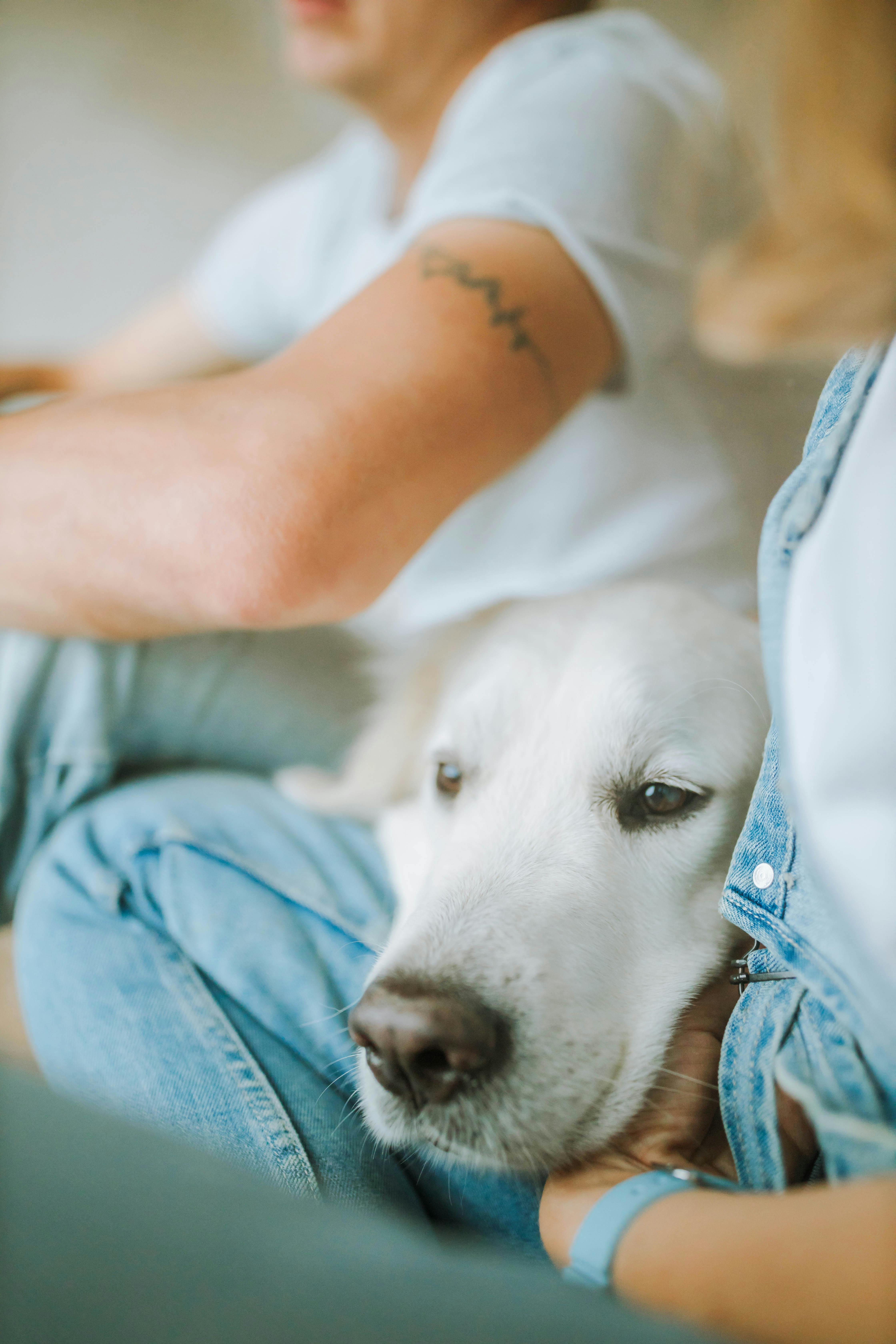
Dogs are some of the most beloved pets worldwide, and their wet noses are a characteristic feature that often sparks curiosity among dog owners. You might wonder, why do dogs have wet noses? And what’s the truth behind the many myths surrounding this unique trait? Let’s take a closer look at these questions, debunk some common misconceptions, and share some fascinating insights about your pup’s snout.
The Science Behind Wet Noses
First of all, wet noses serve a purpose. Dogs’ noses are moist because of a thin layer of mucus that helps them to absorb scent molecules. This is crucial for their incredible sense of smell, which is much better than humans. In fact, dogs have up to 300 million olfactory receptors, while humans only have about 5 million! The wetness of a dog’s nose actually enhances their ability to pick up on scents in the environment.
- Moisture Helps With Scent Detection: A moist nose can trap scent particles more effectively than a dry one.
- Temperature Regulation: Dogs can regulate their body temperature through their noses. When they pant, the moisture can help cool them down.
- Health Indicator: A dog’s nose can indicate health. For instance, a dry or cracked nose might suggest dehydration or illness.
Common Myths About Wet Noses
There are a lot of myths floating around about why dogs have wet noses. Let’s debunk some of these misconceptions:
Myth: Wet Noses Are Always a Sign of Health
- While many healthy dogs have wet noses, a dry nose doesn’t always indicate sickness. Factors like weather, activity level, and even sleep can affect a dog’s nose moisture.
Myth: Dogs Lick Their Noses to Keep Them Wet
- Dogs do lick their noses, but it’s not as much to keep them wet as it is to gather information about their surroundings. It’s a natural instinct for them.
Myth: All Dogs Have Wet Noses
- This isn’t true! Some breeds, particularly those with longer snouts, may have drier noses than others.
Myth: The Wetter the Nose, the Better the Smell
- While a wet nose can enhance scent detection, it doesn’t mean a dog with a dry nose can’t smell well.
Myth: A Dog’s Nose Color Indicates Their Health
- The color of a dog’s nose can vary widely among breeds and is not an indicator of health.
Historical Context of Dogs’ Noses
Dogs have evolved over thousands of years alongside humans, and their noses have played a crucial role in their development as companions and workers. Historically, dogs were bred for specific tasks based on their olfactory abilities. For example, bloodhounds were developed for tracking due to their exceptional sense of smell.
- Working Dogs: Many breeds were developed for hunting, herding, and search and rescue operations, all of which rely heavily on a keen sense of smell.
- Companion Animals: Over time, dogs became more than just working animals; they became beloved pets. Their noses continue to be a defining feature, reflecting their ancestral traits.
Fun Facts About Dog Noses
- Unique Nose Prints: Just like human fingerprints, every dog’s nose print is unique. Some people even use them for identification!
- Nasal Turbinates: A dog’s nose contains complex structures called turbinates, which help to warm and humidify the air they breathe, as well as enhance scent detection.
- Color Changes: A dog’s nose color can change with the seasons; many dogs develop a lighter nose during winter due to reduced sunlight exposure.
What Every Dog Owner Should Know
As a dog owner, understanding the importance of your pup’s nose can help you take better care of them. Here’s what you should consider:
- Regular Checks: Keep an eye on your dog’s nose. Look for changes in moisture, color, or texture.
- Hydration: Make sure your dog stays hydrated. A dry nose can be a sign of dehydration.
- Veterinary Visits: If you notice significant changes in your dog’s nose or overall behavior, consult your veterinarian.
Knowing the truth about your dog’s wet nose can deepen your bond with your furry friend. It’s not just a cute feature; it’s a vital part of what makes dogs special. Understanding their biology helps you appreciate the complexities of their nature and the joy they bring to our lives. So next time you give your pup a scratch behind the ears, remember that their wet nose is not just a charming quirk but a fascinating element of their unique anatomy.
Conclusion
In conclusion, the wet noses of dogs serve multiple essential functions that contribute to their overall health and sensory capabilities. The moisture helps enhance their sense of smell by capturing scent particles, allowing dogs to gather more information about their environment. Additionally, the cooling effect of a wet nose aids in temperature regulation, while the moisture also plays a role in communication with other dogs and humans. Understanding the significance of a dog’s wet nose not only deepens our appreciation for these loyal companions but also highlights the importance of regular veterinary check-ups to ensure their well-being. As a final thought, observe your dog’s nose regularly; any significant changes in moisture or texture could indicate health issues. Stay informed and proactive in caring for your furry friend, as their health and happiness depend on your attentive love and care.

